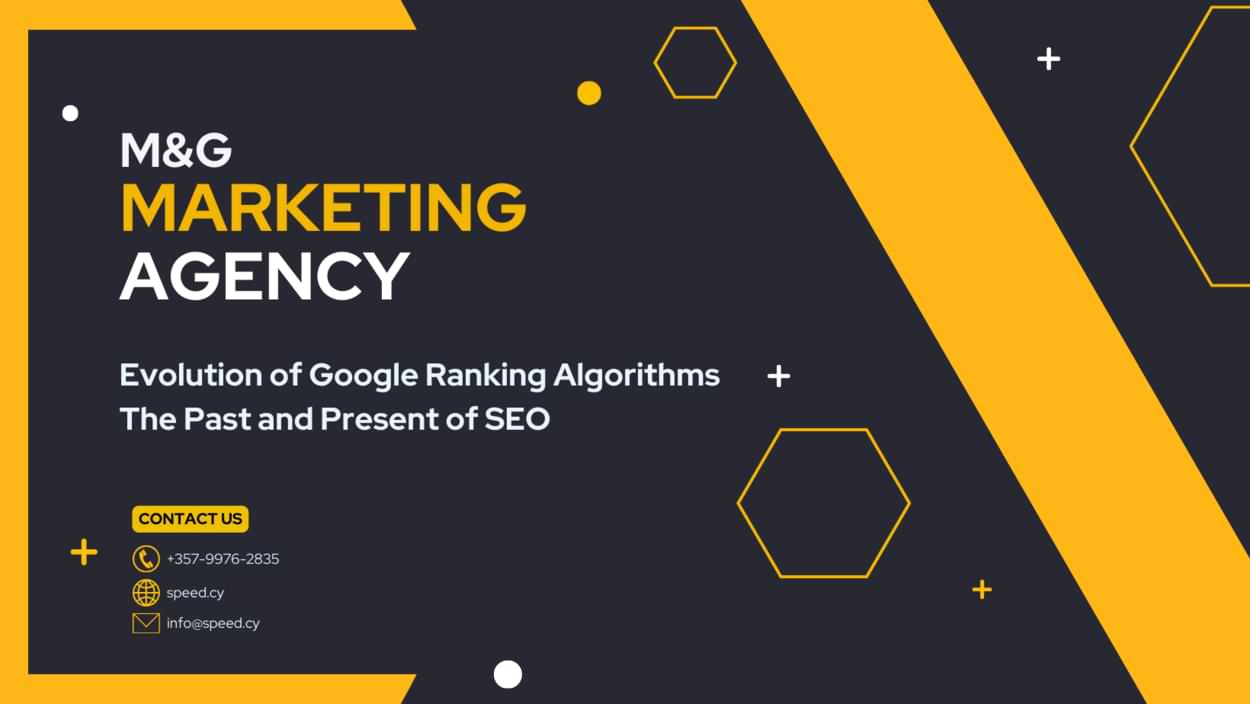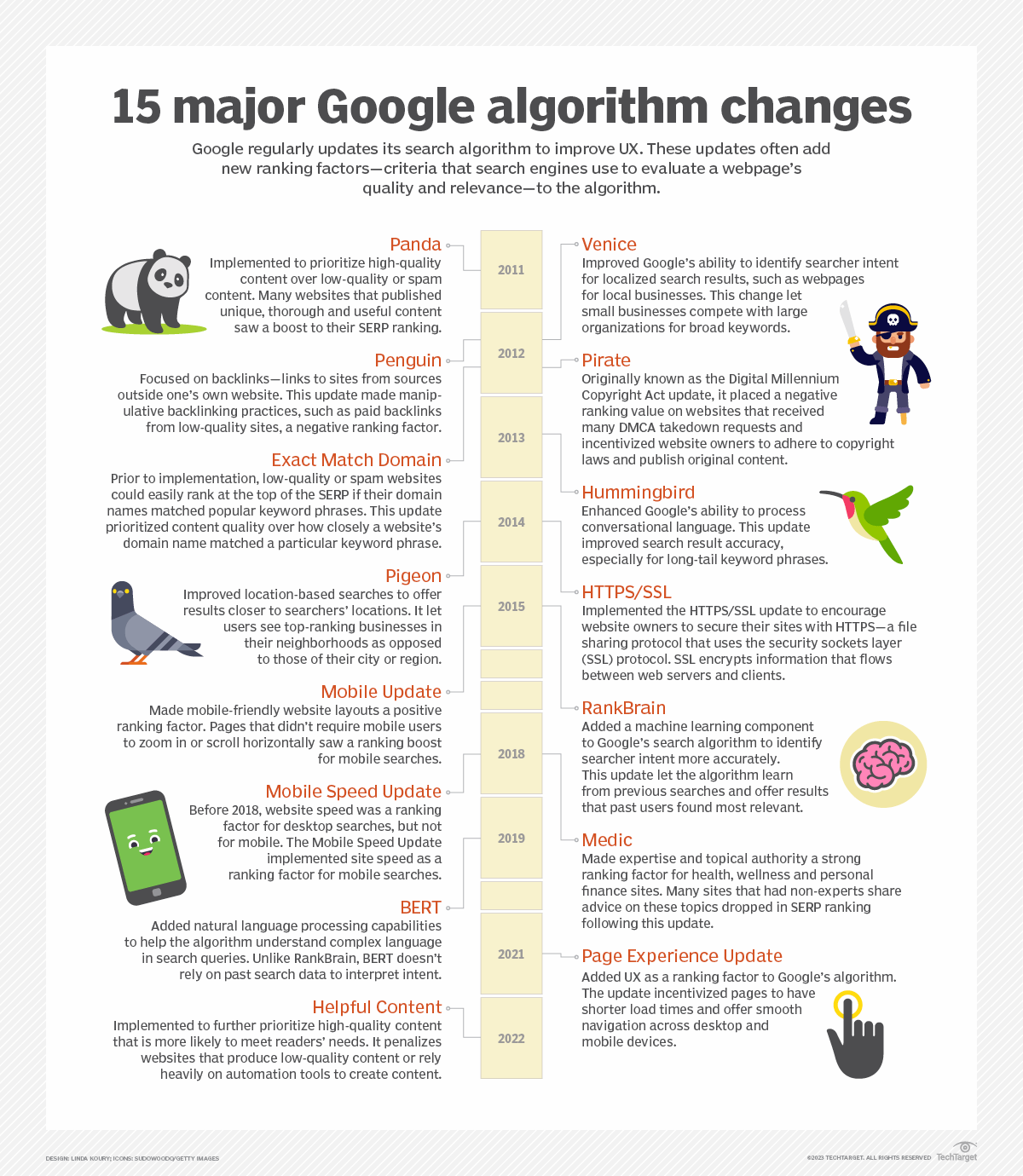Google’s ranking algorithms have undergone constant evolution over the past two decades to better understand and serve users’ search intent. Mastering SEO today requires familiarity with the key algorithms shaping organic search.
With Google launching new algorithms regularly, it can be challenging for SEO professionals to stay up-to-date on how each update rewards quality content and penalizes manipulative tactics.
This guide will provide a comprehensive overview of the most influential Google ranking algorithms, explaining the rationale behind each one and how they impact content optimization best practices.
How Google Search Works
In summary, Google search works by crawling and indexing trillions of webpages using bots.
Background ranking algorithms determine the order of pages based on hundreds of factors from relevance to site trust. When a query is entered, Google checks its index for closest matches and serves pages according to their ranking scores.
Location, personalization, language, and page speed also influence Google’s algorithms and final search results.
How Google's Algorithms Work Together
Each algorithm targets a specific ranking aspect, like speed, local intent, or natural language. Together, their interplay produces an overall score for pages.
Newer algorithms build on capabilities of older ones. For example, passage ranking builds on the contextual understanding abilities of Hummingbird. This symbiosis ensures a diversity of factors determine final search rankings, making manipulation much more difficult.
Why Google's Ranking Algorithms Are Essential
Google’s ranking algorithms are essential for providing users with the most relevant search results efficiently.
Without algorithms, search would be an impossibly cluttered list. The algorithms employ various techniques to filter out low-value pages and highlight authoritative, high-quality sources instead. This saves searchers tremendous time.
Google also needs continual algorithm refinements to counter sites trying to manipulate rankings through deceptive SEO tactics.
Complementary read:
Google: Core Web Vitals Effort Saves Users Over 10,000 Years in Load Times
The Evolution of Google's Algorithms
Looking ahead, advancements in AI will allow future algorithms to better discern intent and meaning. Voice search and conversational interfaces are likely areas of focus.
Personalization will also play a bigger role in tailoring results to individual user interests, locations, habits, and preferences automatically. In general, Google seems to be shifting toward evaluating overall content quality, expertise and positive user experience rather than raw popularity metrics alone.
Google´s Algorithms:
1. Multimodal Search (2022)
What it does: This algorithm allows Google to process images, videos, and audio to deliver more comprehensive and relevant results.
How: Uses AI and computer vision technology to identify entities and concepts within multimedia. Matches them to search queries and user intent.
Impact: Allows users to search via images or hummed audio clips to find matching multimedia webpages. Surfaces YouTube videos directly in search results for how-to style queries.
Pros: Accounts for different learning styles and content preferences. Provides richer results.
Cons: Requires considerable computing resources and advanced technology. Harder for webmasters to optimize for multimedia.
2. Intent Understanding (2022)
What it does: Helps Google better discern the goal and meaning behind search queries.
How: Leverages AI to evaluate context and nuance of words/phrases to determine true user intent.
Impact: Queries like “jobs near me” show local job listings instead of generically popular job sites. “Bob Dylan songs” returns a discography rather than just biographical results.
Pros: Delivers results that better match actual user needs and interests.
Cons: Complex queries with double meanings can be misunderstood. Requires large datasets.
3. MUM (2021)
What it does: Allows for deeper understanding of language nuances and dialects in natural language across different languages.
How: Large neural network trained on huge datasets across 75+ languages. Understands idioms, accents, slang.
Impact: Better interprets slang, irony, cultural references across languages like “throw shade” or “burn rubber”. Can translate foreign language sites with more context.
Pros: Breaks language barriers. More accurate matching of queries.
Cons: Very complex system requiring massive training data. Some meanings lost in translation.
4. Passage Ranking (2020)
What it does: This algorithm identifies and ranks the most relevant passages within a webpage to match search queries.
How: Scans webpages to identify the most relevant text snippets and passages to match query keywords and context.
Impact: Longtail query “benefits of yoga for seniors” can directly pull an excerpt from a webpage on yoga for the elderly rather than ranking the whole page.
Pros: Provides more granular, accurate results for long and complex queries.
Cons: Computationally intensive. Hard to optimize and control passage relevance as a webmaster.
5. Core Web Vitals (2020)
What it does: Measures real-world site performance using key metrics.
How: Evaluates page load speed, responsiveness, visual stability to determine site quality.
Impact: Faster loading informational sites like wikis and news outlets rank higher than slower yet popular sites. Poor mobile experience demotes sites in mobile SERPs.
Pros: Rewards sites optimized for actual user experience. Incentivizes speed.
Cons: Can require considerable development work to improve site performance and UX.
6. E-A-T (2019)
What it does: Assesses expertise, authoritativeness, and trustworthiness of content.
How: Manual Google rater guidelines scoring content on three E-A-T metrics.
Impact: Authoritative sources like government agencies and established medical orgs rank higher for queries seeking facts, statistics, health info.
Pros: Promotes high-quality, reputable content from experts. Improves reliability.
Cons: Hard to quantify and measure. Favors established authoritative sites.
7. Medic (2018)
What it does: Surfaces reputable health/medical content.
How: Uses metrics like author expertise, page quality, and reliability to rank medical pages.
Impact: Official health websites like Mayo Clinic and WebMD appear before commercial sites for symptoms, conditions, treatments.
Pros: Provides access to vital, credible health information.
Cons: Restricts reach/discoverability for less established health/medical sites.
8. Fred (2017)
What it does: Penalizes websites using manipulative SEO tactics.
How: Identifies spammy techniques like keyword stuffing, hidden text, etc.
Impact: Demoted sites engaging in sneaky practices like hiding “Viagra” in pill images or repeating keywords to game relevancy.
Pros: Maintains search integrity by demoting low-value pages using tricks.
Cons: Algorithms can sometimes mistakenly flag natural keyword usage.
9. RankBrain (2015)
What it does: Enables processing of complex queries without pre-programmed rules. It is a machine learning algorithm that helps infer meaning and intent behind search queries.
How: Machine learning model helps infer meaning and intent behind search queries.
Impact: Questions like “best places to travel with kids” or “how to bake a cake” return helpful sites rather than just matches for those keywords.
Pros: More accurate results for questions, voice search, ambiguous queries.
Cons: Lack of transparency in how rankings are determined.
10. Panda (2011)
What it does: Targets low-quality thin or duplicate content pages, and content farms.
How: Identifies factors like short articles, boilerplate text, scraped content.
Impact: Thin affiliate websites with boilerplate content were buried. In-depth, original reporting and analysis sites rose in prominence.
Pros: Pushes value-add, original content higher in results.
Cons: Overly strict at times for newer sites with limited content libraries.
11. Pigeon (2014)
What it does: This algo was designed to improve local and geographic search results.
How: Incorporated more signals like proximity, store hours, contact info into local rankings.
Impact: Local pack of map listings, opening hours, contact info appears for searches like “pizza places nearby”.
Pros: Makes it easier for searchers to find local brick-and-mortar businesses.
Cons: Favors larger local directories like Yelp over individual business websites.
12. Hummingbird (2013)
What it does: Made Google more conversational and contextual. This algorithm was designed to parse full meaning and context of search queries vs just keywords.
How: Parses queries for meaning vs. just matching keywords. For example, understands that “good food in Austin” and “Austin restaurants” are seeking the same information.
Impact: Keyword stuffed pages dropped for sites answering conversational queries with relevant content.
Pros: Results better matched full query meaning and intent. Questions and conversational queries became more usable.
Cons: Required shift from exact match keyword focus. Some sites saw traffic declines if they optimized for keywords over user intent.
13. PageRank (1998)
What it does: Original algorithm that made Google successful. It ranked websites based on quantity and quality of backlinks.
How: Counted links as votes of confidence. More links = higher rank.
Impact: Previously obscure sites built credibility via links and began outranking established incumbents. Early SEO focused heavily on building backlinks.
Pros: Scalable method to approximate page importance. Hard to manipulate.
Cons: Too simplistic. Failed on newer web with more dynamic content.
Now that you understand what the What’s, How’s, impact, pros, and cons are, I want to give you the choice to visit an article on Teach Target that provides additional information about Google’s algorithms. The article is titled: Google algorithms explained: Everything you need to know.
Here’s a helpful infographic below that shows how they prepared their inputs:
In summary, staying on top of Google’s ranking algorithms provides valuable insight into how search engines evaluate and serve content. While the constant changes can feel disruptive, most updates aim to provide users with the most helpful, authoritative results possible. Adapting SEO strategies based on algorithm evolution ultimately allows sites to better satisfy searcher needs and stand out in competitive SERPs.
The overview of key algorithms here highlights the increasing sophistication of Google’s capabilities, and the importance for websites to focus on optimizing for overall quality, performance and user experience to maintain visibility.







